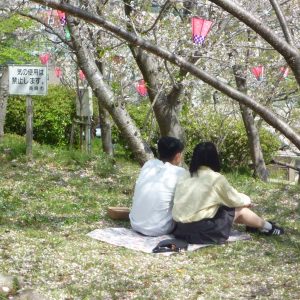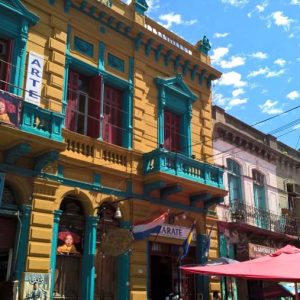There is a vast area of partially wild and partially nurtured parkland right at the western edges of Paris. It occupies space lying even beyond the contemporary splendour of the La Defense district. It has become part of the culture of Paris and is called the Bois de Boulogne. This is a public area that provides many opportunities for exploration. Visitors should be careful though; many perils can sometimes lurk amongst its natural beauty.
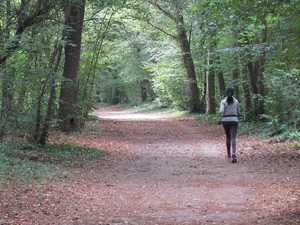 The Bois de Boulogne provides a home to many seemingly unconnected ‘standalone’ features. They are of a great variety and they represent Parisian history and urbanity as though they were individual exhibits in a museum. The natural untended areas are provided with rough tracks for easy walking and contemplation amidst low hanging greenery. They should be treated by the visitor with caution and awareness. They are potentially lawless patches of the great City that provide invisibility to the less gracious elements of Capital life. Prostitution, burglary and criminal activity skulk below the surface. Now and again they can be dangerous and threatening and especially so during the times of darkness.
The Bois de Boulogne provides a home to many seemingly unconnected ‘standalone’ features. They are of a great variety and they represent Parisian history and urbanity as though they were individual exhibits in a museum. The natural untended areas are provided with rough tracks for easy walking and contemplation amidst low hanging greenery. They should be treated by the visitor with caution and awareness. They are potentially lawless patches of the great City that provide invisibility to the less gracious elements of Capital life. Prostitution, burglary and criminal activity skulk below the surface. Now and again they can be dangerous and threatening and especially so during the times of darkness.
The cultivated quarters of the park are quite the opposite. There are many areas of beautifully tended green and carefully developed garden lands that represent the peak of a sophisticated Parisian culture. They all come from an evolution of human grace and taste from previous times and centuries.
There are restaurants, water features, caves and palaces. There are sporting venues, horse and pony riding tracks, theatres and even a zoo. They all provide safe ground amongst the surrounding, seedier side of nature. The features seem all unconnected but individually impressive. The easy way they blend with the coarser side of life is poignant and evident. Somehow the Bois de Boulogne shows off the best of modern Paris dovetailing with a more curious quality from its cultural history. They are as a series of snapshots laying out the past and are presented, almost, as a selection of ‘mugshots’!
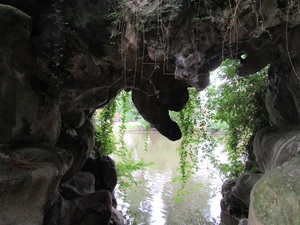 The Bois de Boulogne lies in the 16th arrondissement and was created between 1852 and 1858. The plan was initially conceived by Napoleon 111. He wanted its structure based on the English countryside that he had observed in Hyde Park in London. The land was officially the property of Napoleon but he donated it to the French state as he had a desire for its development.
The Bois de Boulogne lies in the 16th arrondissement and was created between 1852 and 1858. The plan was initially conceived by Napoleon 111. He wanted its structure based on the English countryside that he had observed in Hyde Park in London. The land was officially the property of Napoleon but he donated it to the French state as he had a desire for its development.
A particularly stunning feature of the park is the Grand Cascade. This is an artificial and widespread feature linking two manmade lakes. The construction began in 1853 and used imported water and rocks. Two lakes, an upper and a lower, are linked by water from a canal from the Ourq River and from external artesian wells. The lower lake makes room for an island that features a lonely monument to Napoleon 111 and serves as a public boating lake. The flowing water travels downhill to the smaller artificial lake creating a vibrant sense of movement. Wild bird life abounds. The Cascade itself is constructed from four thousand cubic meters of rock taken from the Palace at Fontainebleau and two thousand cubic meters of cement. It is a very attractive, walk through feature in the form of caves and running water. It is a peaceful and beautiful location to visit on a sunny day.
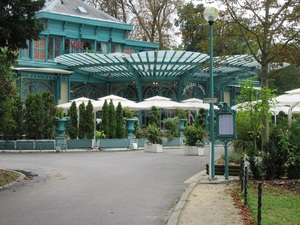 Close to the Cascade is a classically designed Gallic and particularly splendid restaurant La Grande Cascade that is very popular as a wedding venue.
Close to the Cascade is a classically designed Gallic and particularly splendid restaurant La Grande Cascade that is very popular as a wedding venue.
The drainage and irrigation across the park is largely manmade. There were initial design problems due to the variation of terrain elevation but all works so well today.
A very splendid sector of the Bois is the garden and restaurant of Le Pré Catelan. Part of the area is called the Shakespeare Garden. It has been planted with every tree and flower that featured in all of the historic writer’s plays. The associated restaurant is grand and imposing and, I suspect, expensive. It operates to the highest and finest examples of Parisian culture.
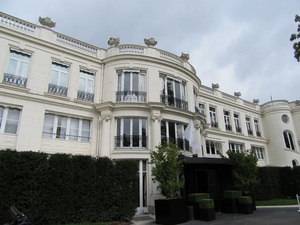 The Bois contains a zoo as well. It is not an extensive site but is home to a variety of interesting animals. The zoo is at the ‘Jardin d’Acclimatation. Until fairly recently, before it was closed in 1931, a ‘zoo’ was also set up featuring human captives from the colonies of the French Empire. These poor people were prisoners in a confined area and were exhibited to the public as objects of fascination. This ‘museum’ was only shut down in modern times and is a reminder of an appalling period of disrespect and cruelty from the very recent past.
The Bois contains a zoo as well. It is not an extensive site but is home to a variety of interesting animals. The zoo is at the ‘Jardin d’Acclimatation. Until fairly recently, before it was closed in 1931, a ‘zoo’ was also set up featuring human captives from the colonies of the French Empire. These poor people were prisoners in a confined area and were exhibited to the public as objects of fascination. This ‘museum’ was only shut down in modern times and is a reminder of an appalling period of disrespect and cruelty from the very recent past.
Great French sport is also practiced in the Bois de Boulogne. There is the celebrated Hippodrome de Longchamp horse race course. Rich gamblers go there annually to bet on the result of the ‘Prix de la Arc de Triumphe’. Some arrive in their private jets.
The Stade Roland Garros tennis court features annually the great French Open Tournament. This sporting venue also resides within the Bois de Boulogne.
 Pony trekking abounds in the park. Fairly rough, stony ground throughout the enclosure in the form of tracks has been provided for the passage of horses. Children adore the riding and guided pony excursions can be taken within the Bois.
Pony trekking abounds in the park. Fairly rough, stony ground throughout the enclosure in the form of tracks has been provided for the passage of horses. Children adore the riding and guided pony excursions can be taken within the Bois.
Public hire boating lakes exist throughout the park. The boats and their slow speed of action seem to act as a reminder of the work from the earlier days of the famous French impressionist artists.
The Bois de Boulogne that now is, was also the location of the very first manned free flight in the world. This took place in a balloon on November 21st in 1783. It was conducted by the Montgolfier brothers. The balloon climbed to three thousand feet above the ground and flew a distance of more than thirty kilometres. The event is marked at the Chateau de la Muette, right on the edge of the Bois. It was a world famous French achievement.
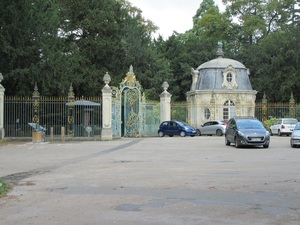 In the centre of the parkland lies the garden Bagatelle. It is secluded and peaceful. Behind this garden rests the Villa Windsor. This is a mini palace that has been visited by English Royalty on many occasions over past centuries. During 1997, it was leased to and ruled over by Mohamed al-Fayed, the owner of Harrods department store in London. In that year on the 31 August, the villa was visited by Princess Diana, wife of Charles, the Prince of Wales and the first in line to the British Throne. Diana was present with her then partner, Dodi Fayed. They were both subsequently killed in a motor accident in central Paris later on the same day. This of course was a significant event in very recent French history.
In the centre of the parkland lies the garden Bagatelle. It is secluded and peaceful. Behind this garden rests the Villa Windsor. This is a mini palace that has been visited by English Royalty on many occasions over past centuries. During 1997, it was leased to and ruled over by Mohamed al-Fayed, the owner of Harrods department store in London. In that year on the 31 August, the villa was visited by Princess Diana, wife of Charles, the Prince of Wales and the first in line to the British Throne. Diana was present with her then partner, Dodi Fayed. They were both subsequently killed in a motor accident in central Paris later on the same day. This of course was a significant event in very recent French history.
The Bois de Boulogne presents many other beautiful and interesting features amongst the shady wild undergrowth. It is a little ‘one off’ exhibition of French history and Parisian culture. Take a visit when you are in Paris, but take care too. Much lurks beneath the wild unfenced terrain and the night and darkness can be quite menacing. Paris has always been a bit like that.

